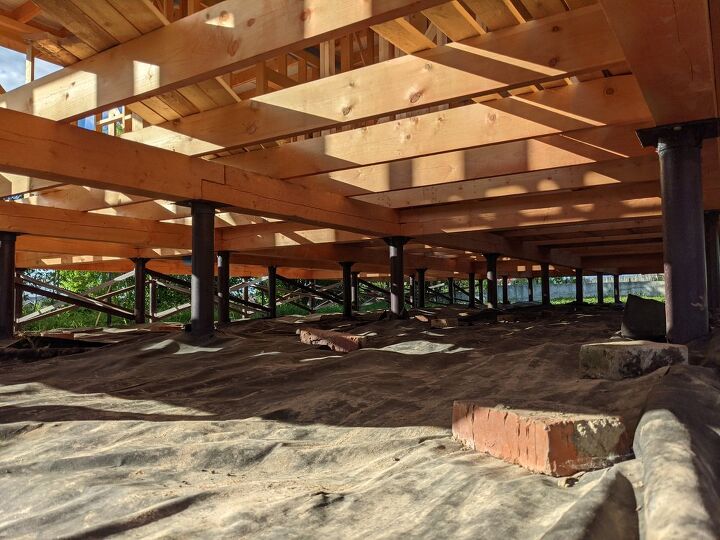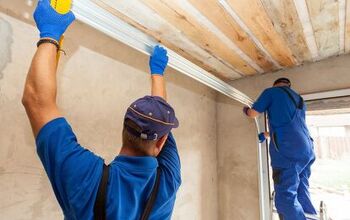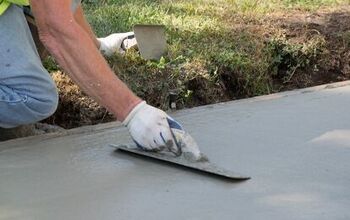How Many Pilings Do I Need For My House? (Find Out Now!)

Pilings are columns that hold up houses in areas where the soil cannot sustain a traditional concrete foundation. Using pilings allows builders to construct homes in areas that would otherwise remain undeveloped, such as beach areas, flood zones, floodplains, wetlands, and the sides of mountains. Having the right number of pilings keeps your home safe and minimizes the risk of damage from erosion and storms.
You can get a rough starting point for the number of pilings by dividing the total load on the pilings by the load capacity of each piling. Factor in wind, snow, seismic activity, and other conditions that increase the load on the pilings. Also, check local building codes, and consult with an engineer.
Before we look at the number of pilings for your home, let’s discuss why pilings are important.
Do You Need a Foundation Contractor?
Get free, zero-commitment quotes from pro contractors near you.

Why Houses Need Pilings
Pilings allow builders to construct safe homes in places that would otherwise remain undeveloped. The columns are used instead of traditional concrete foundations to stabilize homes and keep the structures safe during storms. Pilings are made of wood, concrete, or metal, and typically used in flood zones, swamps, beach areas, and the sides of mountains.
Types of Pilings
The type of piling that is used in residential applications depends on the soil, structure of the home, and other considerations. There are three types of pilings that are used for homes. Round pilings are the most affordable. The columns are tapered on each end and typically made from wood. Uniform diameter pilings are similar to round pilings, but they are machined to make the column diameter consistent. These are the most expensive types of pilings. Square pilings simplify construction and have a more appealing appearance.
If you live in an area that tends to flood, round pilings are the best option. The shape allows water and debris to flow freely. Square pilings are the least effective. The shape creates turbulence in the water, and this erodes the soil around the columns.
How Many Pilings for My House?
It depends. Engineers use complex calculations to determine the number and materials for pilings, such as:
- Dead Load: Dead load is the weight of a house that remains constant.
- Live Load: Live load is the weight of people inside a house.
- Live Roof Load: Load of any additional temporary structures that are not part of the roof, such as solar panels.
- Snow Load: Load created by snow during the winter – based on historical snow levels in a specific area.
- Wind Load: Pounds per square foot of pressure that is put on the home from the wind.
- Seismic Load: The pressure placed on a home during earthquakes.
- Load Capacity: The maximum amount of weight that a single piling withstands before failing.
- Resistance Capacity: How well pilings made with specific materials and designs withstand forces.
How to Set Pilings for a House
Pilings are set in a way that maximizes load-bearing. Depending on the shape of the home, pilings may be set in lines, triangles, rectangles, hexagons, squares, or circles. Some home designs require a piling in the center of the structure as well. Holes are dug into the soil for the column and backfilled with soil or concrete. Once the columns are set, a frame is built on top of the pilings.
Problems with Pilings and How to Fix Them
Just like traditional foundations, pilings develop problems that make your home unsafe and unstable. Here’s how to fix problems with the pilings of your home.
Damaged Pilings
Cracks and other types of damage are signs of a failing piling. Replace the column, and have the other pilings checked by an engineer.
House on Pilings Moves
Some swaying on windy days and during earthquakes is normal for homes that are built on pilings. If you notice that your home shakes or sways regardless of the weather, there’s a problem. The issue is either with the concrete foundation for the piling or the hardware that attaches the column to the house. Stabilize the house with jacks. Remove the damaged piling and concrete, and install a new piling.
House on Pilings Not Level
When a house on pilings is not level, it indicates that one of the columns was either set improperly or has sunk into the soil. Check the height of each piling. Use a jack to stabilize the house, and install a new piling at the correct height.
Related Questions
Are pilings the same as piers for a home?
No. Pilings are individual columns that bear the weight of a house in unstable soil. Piers rely on solid soil or bedrock to stabilize a structure. By design, pilings bear more weight than piers. Piers require less depth in the soil than pilings.
How long do pilings last?
Wood pilings that are treated with water-resistant chemicals can last up to 30 years. Pilings made from concrete and steel last even longer.
How do I treat my pilings for mold and pests?
Older pilings may not have coatings that prevent damage from mold and pests. The best solution is to replace the pilings with newer materials.
Can I put something on top of a piling to level or stabilize my house?
No. Problems with leveling and movement of a house on pilings are signs of failing columns. Stabilize the house with a jack and concrete blocks, and contact an engineer to find out how to make repairs.
Do You Need a Foundation Contractor?
Get free, zero-commitment quotes from pro contractors near you.

What Did We Learn?
Pilings work much the same way as concrete foundations – they stabilize your home and protect the structure from damage. Several factors are considered when deciding how many pilings are needed, such as soil content, load size, weather patterns, load capacity, and resistance capacity. You can get a very basic idea of how many pilings your house needs. Add the total weight of your home, furnishings, and occupants. Divide this number by the load capacity of the piling. Before you finalize your construction plans, check local building codes and consult with a structural engineer.

Jennifer L. Eggerton loves being hands-on, whether it's with a home DIY project, making repairs, re-decorating a room, or keeping life organized. She enjoys helping people by sharing her knowledge, insights, and experiences, as well as her lessons learned. In addition to her work as a writer, Jennifer is a Jeep® overlander, self-published author, and nature photographer who loves being outdoors.
More by Jennifer Eggerton



























